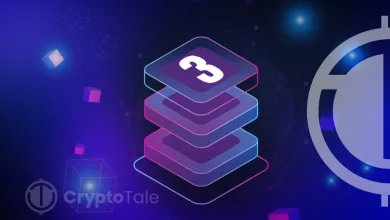What Is the Bitcoin Runes Protocol and How Does It Work?

Making its debut on the 840,000th block of the Bitcoin halving, the Bitcoin Runes protocol swiftly emerged as a major player in network transactions. Designed by a prominent blockchain developer, Runes revolutionizes token creation and management with its efficient and user-friendly approach. The launch of Bitcoin Runes signifies a big advancement in enhancing the utility and functionality of the Bitcoin network, setting a new standard for efficiency and innovation in the realm of fungible tokens.
Who and Why Was the Bitcoin Runes Protocol Created?
In September 2023, Casey Rodarmor, the creator behind the Ordinals protocol, announced the Runes protocol and worked hard to launch it on Bitcoin halving day in April 2024. The Runes protocol is a token standard on the Bitcoin network, which makes creating fungible tokens easier and more efficient.
Runes protocol leverages the UTXO model and the OP_RETURN opcode, simplifying the process of creating and managing fungible tokens. By utilizing the UTXO (Unspent Transaction Outputs) model, Runes allows the creation of fungible tokens with a much smaller footprint on the blockchain and minimizes the creation of dust(excessive junk), which causes clusters in the network and decreases efficiency.
Unlike other token standards, Runes uses Bitcoin’s native features to create, mine, and transfer tokens directly on the blockchain. Compared with the BRC-20 token standard used in the ordinals, the Runes protocol is a more streamlined and efficient alternative.
Over the last few years, the Bitcoin ecosystem has developed to include fungible and non-fungible tokens. The Rune protocol will revolutionize the creation of tokens in Bitcoin, leading to an increase in the network’s popularity and utility. Furthermore, it promotes a healthier way of creating tokens and contributes to the long-term sustainability and growth of the Bitcoin ecosystem. Casey Rodarmor stated,
Creating a good fungible token protocol for Bitcoin might bring significant transaction fee revenue, developer mindshare, and users to Bitcoin.
How Does the Bitcoin Runes Protocol Work?
UTXO
The Unspent Transaction Output (UTXO) in the Bitcoin wallet represents the total funds available from various sources in your wallet. Each transaction consumes a specific amount of funds, and once the recipient receives the tokens, the new balance is updated. Each UTXO has the capacity to store any number of Runes tokens, allowing for flexibility in token management.
OP_RETURN opcode
An essential component of the Runes protocol is the OP_RETURN, which allows users to add extra data to Bitcoin transactions without affecting the availability of UTXOs and minimizes blockchain bloat. OP_RETURN is used for data storage and transaction management within the Runes architecture. It allows for the inclusion of up to 80 bytes of data, encompassing token details like name, ID, symbol, command for specific actions, and other essential data. Runes protocol messages stored in the OP_RETURN section of a Bitcoin transaction are known as the Runestone.
Each Rune transaction can specify multiple operations across different Runes. When a token transfer occurs, the Runes protocol utilizes the OP_RETURN data to split the UTXO into multiple new UTXOs, each representing distinct amounts of the token, which are subsequently dispatched to their respective recipients.
What Are the Benefits of Bitcoin Runes?
- Efficiency: Due to BRC-20’s operational mode, token creation and management lead to a significant proliferation of UTXOs, causing performance bottlenecks in the Bitcoin network. However, Bitcoin Rune circumvents this problem by employing the OP_RETURN model, which eliminates the creation of unspent UTXOs. Additionally, the OP_RETURN opcode, with its 80-byte memory capacity, consumes fewer resources compared to BRC-20, which operates with a 4MB memory capacity.
- Simplicity: Bitcoin Runes provides a simpler approach to token creation and management compared to protocols like BRC-20. With the Runes protocol, users can effortlessly manage multiple tokens directly on the blockchain.
- Increase in User Base: Like BRC-20, Bitcoin Runes primarily creates tokens, particularly meme coins. Given the vibrant community of crypto enthusiasts and traditional investors surrounding meme coins, attracting their attention could significantly expand the Bitcoin network’s user base.
During Bitcoin Runes’ pre-launch phase, many projects centered around meme coins. Following the protocol’s official launch, the network experienced a surge in user activity, particularly in meme coin trading. This increase in user engagement and network usage is expected to increase network revenue.
- Increased Miner Revenue: The Bitcoin halving, which reduced the block reward to 3.125 BTC, presents a challenge for miners. However, introducing Bitcoin Runes could potentially boost miners’ revenue by offering additional avenues for earning fees.
- Increased Utility: The presence of multiple token creation protocols on a blockchain enhances the network’s utility. By integrating Runes projects into the Bitcoin network, its overall utility is expanded.
What Are Etching, Minting, Transferring and Cenotaph in Runes?
Etching: Etching involves creating a new Rune on the Bitcoin network. It requires users to specify various attributes such as name, symbol, divisibility, premine, supply amount, and start and end height, among others, in the OP_RETURN output.
Minting: Following etching, the next step is minting. During minting, users input the Rune ID, containing the transaction index and block height of the transaction. Minting can occur through open or closed methods. In open minting, anyone can create a mint transaction and generate a fixed amount of new Runes after the initial etching. Closed mints, however, only allow minting under predetermined conditions, such as a specific time period.
Transferring: Lastly, transferring Runes involves using edicts, which specify output number, amount, and Rune ID. Edicts facilitate the transfer or airdrop of a batch of runes to a single account.
Cenotaphs: Issues during etching, minting, or transferring that result in an invalid transaction are termed cenotaphs. The Runes protocol addresses such occurrences by burning invalid transactions and promoting caution among users.
What Is the Difference Between BRC-20 and Runes?
The Runes and BRC-20 token standards present distinct methodologies and features for token creation and management on the Bitcoin blockchain, catering to different needs and technical approaches. While both enable token creation on Bitcoin, BRC-20 utilizes the Ordinals protocol, allowing data attachment. In contrast, Bitcoin Rune, introduced as an enhancement, offers a less resource-intensive solution for the Bitcoin network. Here is a comparison between the two token standards.
| RUNE | BRC-20 |
| Created by Ordinals creator Casey Rodarmor. | Based on the Ordinals model |
| Launched in April 2024 | Launched in March 2023 |
| Based on the UTXO model | Based on Ordinals model |
| Low on-chain footprint | High on-chain footprint |
| Compatible with Lightning network | Not compatible with Lightning network |
| Simple Design | Complex Design |
| Data is stored in the OP_RETURN field | Data is inscribed on the sat |
What Were the First Projects Created Based on Runes?
After Rodarmor announced the Runes protocol launch, the Ordinals protocol saw a surge in activity. The most notable developments were made by RSIC (Rune Specific Inscription Circuits). It is a major project within Ordinals with a collection of 21,000 RSICs and plans to launch a token called RUNE. The RSICs were airdropped to over 9,000 wallets containing certain Ordinals inscriptions like Bitcoin Puppets and nodemonkes, and those who have been active in the Ordinals space since its inception. Users with RSIC Ordinals can use their inscriptions to start mining upcoming tokens.
Another project gaining traction includes Runestone. This project was created by the famous Leonidas(pseudonym) and has 112,383 Runestone Ordinals. These Ordinals were airdropped to wallets containing at least three inscriptions before the one-year anniversary of the Ordinals protocol launch. These Runestones will automatically convert into Runes tokens after the protocol is alive. Furthermore, Leonidas revealed his plans for dog-themed Rune meme coins and two other potential token airdrops.
Other than these, there were a lot more projects developing in Ordinals space, all doing their best to create a Rune-based project.
Conclusion
The introduction of the Bitcoin Runes protocol marks a significant milestone in the evolution of token creation and management on the Bitcoin blockchain. Its simplified approach not only enhances network efficiency but also promotes greater utility and accessibility, attracting a diverse range of users, including meme coin enthusiasts and traditional investors. With its successful launch in April 2024, Runes has sparked a wave of innovation and development within the Bitcoin ecosystem. As the network continues to grow and evolve, Runes stands to play a pivotal role in shaping the future of decentralized finance and digital asset management on the Bitcoin blockchain.





